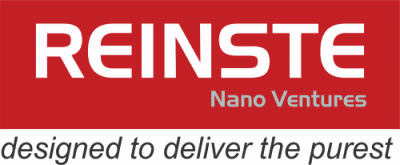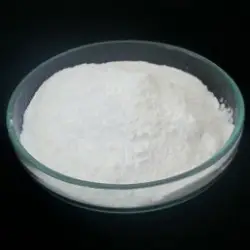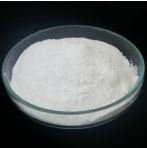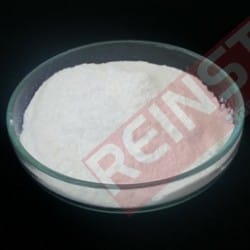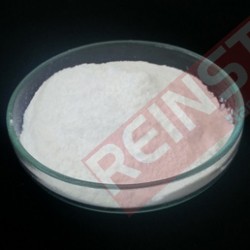Nano Aluminum Oxide: Revolutionizing Lithium Battery Technology
The quest for more efficient, safer, and longer-lasting energy storage solutions is perpetual, and at its forefront lies the groundbreaking advancements in lithium battery technology. Among the myriad of materials pushing these boundaries, Nano Aluminum Oxide stands out as a true game-changer. Its unique properties are not just incrementally improving batteries; they are fundamentally redefining what's possible, promising a future of enhanced performance across diverse applications, from electric vehicles to portable electronics and grid-scale energy storage. This article delves into the transformative role of Nano Aluminum Oxide in shaping the next generation of lithium batteries.
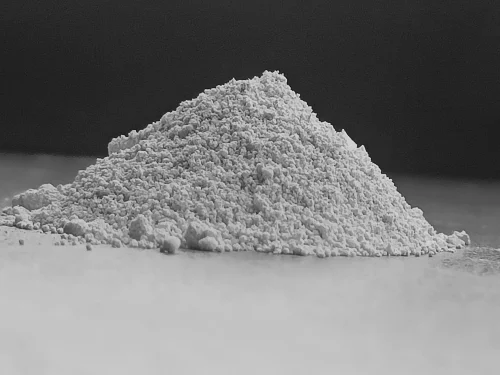
Understanding Nano Aluminum Oxide Properties
Nano Aluminum Oxide, or nano-Al₂O₃, refers to aluminum oxide particles engineered to be on the nanoscale, typically ranging from 1 to 100 nanometers. This diminutive size bestows upon it extraordinary Nano Aluminum Oxide properties that are distinct from its bulk counterpart. Key characteristics include an exceptionally high surface-area-to-volume ratio, superior mechanical strength, excellent thermal stability, and remarkable chemical inertness. These attributes make it an ideal candidate for advanced material applications, particularly where surface interactions and stability are paramount, such as in battery components. The high surface area allows for more active sites for reactions or coatings, while its robust nature provides structural integrity.
The Critical Importance of Nano Aluminum Oxide in Batteries
Lithium-ion batteries, despite their widespread adoption, face challenges related to safety, lifespan, and energy density. This is where the importance of Nano Aluminum Oxide in batteries becomes profoundly evident. Traditional battery materials can degrade over time, leading to reduced capacity, increased internal resistance, and even thermal runaway incidents. Nano Aluminum Oxide acts as a protective layer and a performance enhancer, addressing these critical issues. It creates a more stable internal environment, mitigating the side reactions that often plague battery longevity and safety. Its integration signifies a leap towards more reliable and durable energy storage solutions.
How Nano Aluminum Oxide Enhances Battery Performance
The core question for engineers and consumers alike is: how Nano Aluminum Oxide enhances battery performance? The mechanisms are multifaceted and target several critical aspects of battery operation:
- Enhanced Electrode Stability: By coating electrode materials (both anode and cathode) with a thin layer of nano-Al₂O₃, it prevents direct contact between the electrode and the electrolyte. This protective barrier suppresses unwanted side reactions, reduces the formation of solid electrolyte interphase (SEI) layers, and mitigates dendrite growth on the anode, especially crucial for silicon-based anodes. This leads to significantly improved cycle life and capacity retention.
- Improved Thermal Safety: Lithium-ion batteries can generate significant heat during rapid charging/discharging or under stress, posing thermal runaway risks. Nano Aluminum Oxide coatings act as an excellent thermal insulator and dispersant, improving the battery's thermal stability and reducing the risk of overheating. This is a vital factor for the safety of large battery packs in electric vehicles and grid storage.
- Increased Power Density and Rate Capability: The highly porous and high-surface-area nature of nano-Al₂O₃ can facilitate faster lithium-ion transport across interfaces, thereby boosting the battery's power density and enabling quicker charging and discharging rates. This is particularly beneficial for applications requiring rapid energy delivery.
- Mechanical Reinforcement: The robust nature of nano-Al₂O₃ provides mechanical support to the electrodes, preventing structural degradation due to repeated volume changes during charge and discharge cycles. This physical reinforcement contributes directly to extending the battery's overall lifespan.
Nano Aluminum Oxide in Lithium-Ion Batteries: Recent Applications and Examples
The integration of Nano Aluminum Oxide in lithium-ion batteries is already yielding impressive results across various sectors. Its versatility allows for application in different battery components, each offering distinct advantages:
- Cathode Coatings: A common application involves coating high-nickel cathodes (like NMC and NCA) with nano-Al₂O₃. This coating prevents the direct contact of cathode material with the electrolyte, reducing oxygen release at high voltages and suppressing phase transitions, leading to enhanced cycling stability and thermal resilience. For instance, in advanced electric vehicle (EV) batteries, this extends range and battery life, addressing a key consumer concern.
- Anode Protection: Silicon anodes, while promising for high energy density, suffer from massive volume expansion during lithiation. Nano Aluminum Oxide coatings can create a stable artificial SEI layer, accommodating volume changes and preventing pulverization, thus making high-capacity silicon anodes viable for commercial use in next-generation smartphones and EVs.
- Separator Coatings: Applying a thin, porous layer of nano-Al₂O₃ to battery separators improves their thermal shutdown properties, reduces shrinkage at high temperatures, and enhances electrolyte wettability. This provides an additional layer of safety and improves overall battery performance, crucial for applications where extreme conditions might be encountered.
- Solid-State Batteries: In the nascent field of solid-state batteries, nano-Al₂O₃ is being explored as a component in solid electrolytes or as a protective layer for metallic lithium anodes, combating dendrite formation and improving interfacial stability. This pushes the boundaries of safe and ultra-high energy density storage.
Benefits of Nano Aluminum Oxide for Technology
Beyond the direct improvements to battery metrics, the overarching benefits of Nano Aluminum Oxide for technology are profound. It accelerates the transition to a more sustainable energy landscape by enabling more robust and efficient power sources. From consumer electronics that last longer to electric vehicles with extended ranges and grid-scale storage systems that can reliably integrate renewable energy, Nano Aluminum Oxide plays a pivotal role. Its ability to enhance safety also reduces the risks associated with high-energy battery systems, fostering greater public confidence and broader adoption of advanced technologies.
Nano Aluminum Oxide and Energy Storage: A Synergistic Relationship
The synergy between Nano Aluminum Oxide and energy storage is undeniable. As the world moves towards decarbonization, the demand for sophisticated energy storage solutions escalates. Nano Aluminum Oxide's contribution to improving battery longevity, safety, and performance directly addresses this need. It allows for more efficient capture and release of renewable energy, making intermittent sources like solar and wind more reliable. This material is not just an additive; it's an enabler for the next generation of power solutions, underpinning advancements in every sector reliant on stored energy.
Nano Aluminum Oxide in Advanced Materials and Electronics
While its impact on batteries is significant, the versatility of Nano Aluminum Oxide in advanced materials extends to various other fields. Its excellent dielectric properties, high thermal conductivity, and mechanical strength make it valuable in electronics as a substrate, insulator, or heat dissipator. In semiconductors, it can improve device performance and reliability. Its role as a catalyst support or abrasive material further highlights its broad utility, showcasing its importance in the broader landscape of advanced technological development.
Role of Nano Aluminum Oxide in Electronics and Battery Life Improvement
The widespread use of portable electronic devices makes battery life improvement a constant pursuit. The role of Nano Aluminum Oxide in electronics, particularly in their power sources, is critical. By enabling batteries to endure more charge-discharge cycles without significant degradation, it translates directly into longer-lasting smartphones, laptops, and wearables. This reduces the frequency of device replacement, contributing to sustainability and consumer satisfaction. For high-performance electronics, its ability to enhance power delivery means snappier performance and more demanding applications can be supported reliably.
Nano Aluminum Oxide Versus Traditional Materials
When comparing Nano Aluminum Oxide versus traditional materials used in battery components, the advantages become stark. Conventional inorganic separators or electrode additives often lack the nanoscale precision, high surface area, and tailored reactivity that nano-Al₂O₃ offers. For instance, traditional polymer separators can shrink at high temperatures, leading to internal short circuits. A nano-Al₂O₃ coating, however, provides thermal stability and mechanical robustness, preventing such failures. Similarly, bulk aluminum oxide might offer some thermal stability but lacks the interfacial enhancement and dendrite suppression capabilities of its nanoscale counterpart due to limited surface area and uniform coating ability.
Nano Aluminum Oxide Suppliers and Manufacturing Process
The growing demand for advanced battery materials has led to a specialized market for Nano Aluminum Oxide suppliers. These suppliers often employ sophisticated manufacturing processes to produce high-purity, uniformly sized nanoparticles. Common methods include sol-gel synthesis, chemical vapor deposition (CVD), flame spray pyrolysis, and hydrothermal synthesis. Each Nano Aluminum Oxide manufacturing process has its unique advantages in terms of cost, scalability, and particle morphology control, allowing suppliers to cater to specific industrial requirements for various applications, including battery formulations.
Future of Nano Aluminum Oxide in Technology and Market Trends
The future of Nano Aluminum Oxide in technology is exceptionally bright, particularly within the energy storage sector. As the global push for electric vehicles intensifies and renewable energy integration becomes more critical, the demand for high-performance, safe, and durable batteries will only grow. This will fuel significant growth in the Nano Aluminum Oxide market trends. Continuous innovation in synthesis methods to reduce cost and enhance purity, alongside research into novel applications, will solidify its position as a cornerstone material for advanced energy systems. Expect to see further adoption in solid-state batteries, flexible electronics, and next-generation supercapacitors.
Nano Aluminum Oxide Research and Development and Sustainable Energy
Ongoing Nano Aluminum Oxide research and development is exploring even more sophisticated ways to harness its properties. This includes developing hybrid nanocomposites, optimizing coating techniques for ultra-thin layers, and investigating its role in new battery chemistries beyond lithium-ion. This research is intrinsically linked to the advancement of Nano Aluminum Oxide and sustainable energy. By enabling more efficient energy storage, it reduces reliance on fossil fuels, supports the proliferation of clean energy sources, and contributes to a circular economy through extended battery lifespans and potential for easier recycling of components.
Nano Aluminum Oxide in Electric Vehicles and Renewable Energy
The impact of Nano Aluminum Oxide in electric vehicles cannot be overstated. It directly contributes to the Holy Grail of EV development: longer range, faster charging, and enhanced safety. By improving the performance and longevity of EV batteries, it makes electric mobility more accessible and appealing to a wider consumer base. Similarly, for Nano Aluminum Oxide in renewable energy, its role is crucial for grid stabilization and energy independence. Large-scale battery storage, made more efficient and safer by nano-Al₂O₃, ensures that solar and wind power can be reliably supplied even when the sun isn't shining or the wind isn't blowing, effectively bridging the intermittency gap.
Nano Aluminum Oxide for Industrial Applications
Beyond batteries, Nano Aluminum Oxide for industrial applications is vast and varied. It is used as an abrasive in polishing and grinding, as a catalyst support in chemical reactions, in ceramics for high-temperature resistance, and in coatings for wear resistance and corrosion protection. Its unique nanoscale properties allow for superior performance in these diverse fields, from aerospace components to medical implants, demonstrating its broad utility and economic significance.
Frequently Asked Questions about Nano Aluminum Oxide in Batteries
What are the primary benefits of using Nano Aluminum Oxide in lithium-ion batteries?
The primary benefits include significantly improved battery safety due to enhanced thermal stability, extended cycle life by protecting electrodes from degradation, increased power density for faster charging/discharging, and overall better performance and reliability. It addresses critical issues like dendrite formation and electrode volume changes.
How does Nano Aluminum Oxide improve battery safety?
Nano Aluminum Oxide enhances battery safety primarily by acting as a protective coating on electrode materials and separators. This prevents direct contact between electrodes and electrolyte, reducing exothermic side reactions and suppressing thermal runaway. Its high thermal stability also helps dissipate heat more effectively within the battery cell.
Is Nano Aluminum Oxide used in all types of lithium batteries?
While most prominently used in lithium-ion batteries (especially those with high-nickel cathodes and silicon anodes), Nano Aluminum Oxide's applications are expanding. It's being explored in solid-state batteries and other advanced battery chemistries due to its versatile protective and enhancing properties, making it a key material for future energy storage technologies.
What is the typical lifespan improvement expected from batteries using Nano Aluminum Oxide?
The exact lifespan improvement varies depending on the specific battery chemistry, design, and application. However, studies and practical applications have shown that Nano Aluminum Oxide can extend the cycle life of lithium-ion batteries by 20-50% or even more in some cases, by mitigating degradation mechanisms and maintaining electrode integrity over longer periods.
Where can I find reliable Nano Aluminum Oxide suppliers for battery applications?
Reliable Nano Aluminum Oxide suppliers for battery applications are typically specialized chemical companies focusing on advanced materials and nanomaterials. It's advisable to look for suppliers with certifications, strong R&D capabilities, and a proven track record in providing high-purity, consistent-quality nano-Al₂O₃ tailored for electrochemical applications. Many leading material science companies offer these products.
